July: The picture-perfect heart of summer
Frontenac State Park Association newsletter
July 2024 (Vol. 2, No. 7)
Questions, comments, compliments, complaints, contributions (especially contributions!)? Newsletter editor Pamela Miller can be reached at pamelamarianmiller@gmail.com.
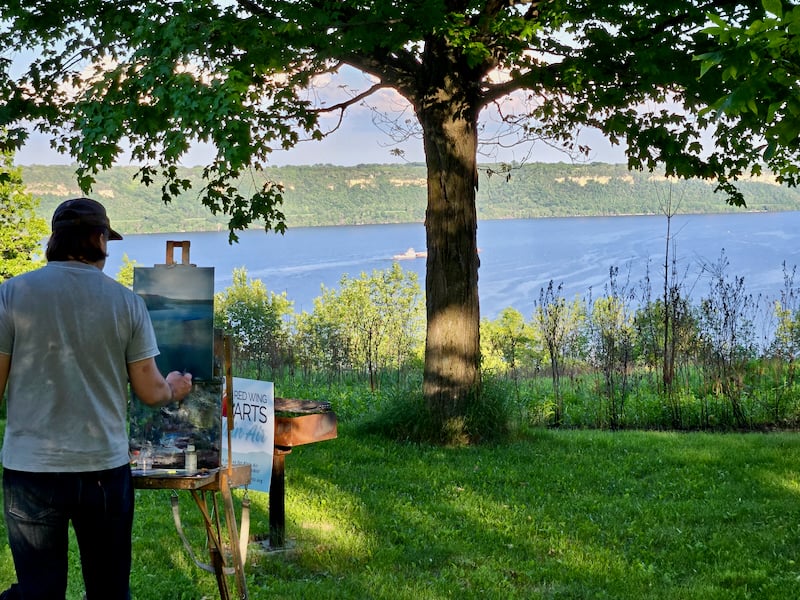
July: The picture-perfect heart of summer
Oh my, it’s July! The beautiful, blazing, beating heart of summer, and what a summer we’re having! After three years of merciless drought, copious rain has drenched Frontenac State Park, creating an intricate palette of every kind of green imaginable, and countless other hues. We hope you’re visiting the park as often as you can to enjoy that amazing spectacle.
And yet, we must say, all this rain, which we giddily dubbed “glorious” in our June newsletter, is not all good. North to south, Minnesotans are grappling with serious flooding, including some of the park’s good neighbors in Old Frontenac. Gardeners are wincing at soggy ground and occasional root rot, and we’ve noticed mold on wild grapes and berries, plants that do best in drier weather.
Augh, must every change of weather be so dramatic? We’ll spare you our patented lament about extremes of weather caused by climate change (yes, friends, it’s painful, but science has shown us it’s so), but we’d be remiss if we didn’t write about the recent rains that fell on our park’s broad flood plain …
From drought to deluge: Ah, but the birds sing on
Frontenac State Park’s Sand Point Trail, a part of the park you can’t easily walk to from the main park entry area but can quickly drive to and then park at the intersection of Hwy. 61 and Goodhue County Road 2, is especially beloved by bird watchers, who marvel through the year at its rich variety of woodland and shore birds. We’re used to this sprawling natural flood plain doing its thing in early spring, but this year, it didn’t. Instead … it’s saturated now, as July arrives, after incessant June rains.
On a recent languid evening, your newsletter editor walked its two forks, both of which quickly turned into inaccessible muddy lakes. And yet, on those short walks, here’s what my phone’s Merlin bird ID app recorded, most of which I then was able to spot in the green-as-Ireland canopy high above: American Goldfinch, American Redstart, American Robin, Baltimore Oriole, Cedar Waxwing, Common Yellowthroat, Eastern Wood-Pewee, House Wren, Indigo Bunting, Mallard, Mourning Dove, Northern Cardinal, Northern Flicker, Red-eyed Vireo, Red-winged Blackbird, Sedge Wren, Song Sparrow, Warbling Vireo, Wood Thrush (its startling song was my favorite), Yellow Warbler.
These are our treasures on Earth. If for any reason you’re feeling unsettled, come walk in our beautiful park, perhaps with your phone turned off … except for that awesome free Merlin bird app. We feel sure you will feel calmer and better, as we have in similar moments. Peace to you, fellow lovers of Frontenac State Park!
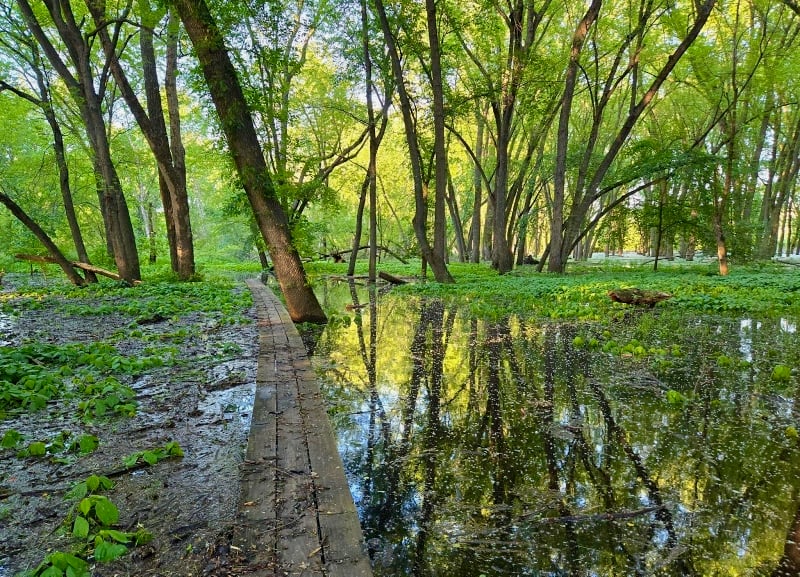
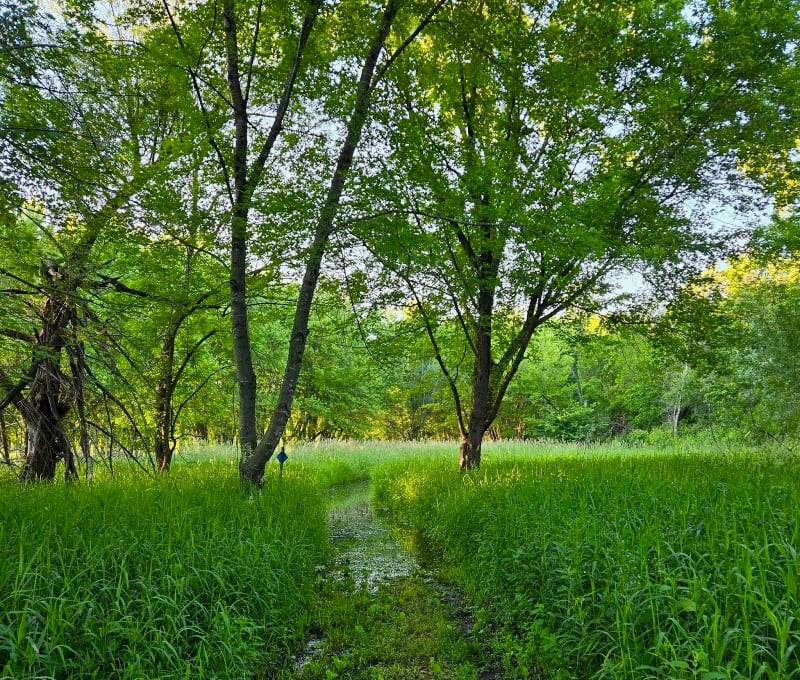
A July and August full of captivating events
Your Frontenac State Park Association friends kept busy in June, and will do the same in July. You’re invited to all of these events!
Saturday, July 6, 10-11 a.m.: Nature walk with interpretive naturalist and FSPA member Bruce Ause, leaving from campground kiosk.
Saturday, July 6, 7 p.m.: “Starry, Starry Night” program with the Rochester Astronomy Club, beginning with a 45-minute presentation— cloudy or clear—at the picnic shelter before star viewing from the main parking lot.
Tuesday, July 9, 10-11 a.m.: “Nature Explorers: Insects!” For preschoolers 3-6, with interpretive naturalist Sara Holger, main picnic shelter. (Note: Our June Nature Explorers session on wildflowers was well attended and great fun for all—the kids, their accompanying parents or grandparents, and we FSPA helpers! Hope to see even more of you at this one.) Our handy flier …
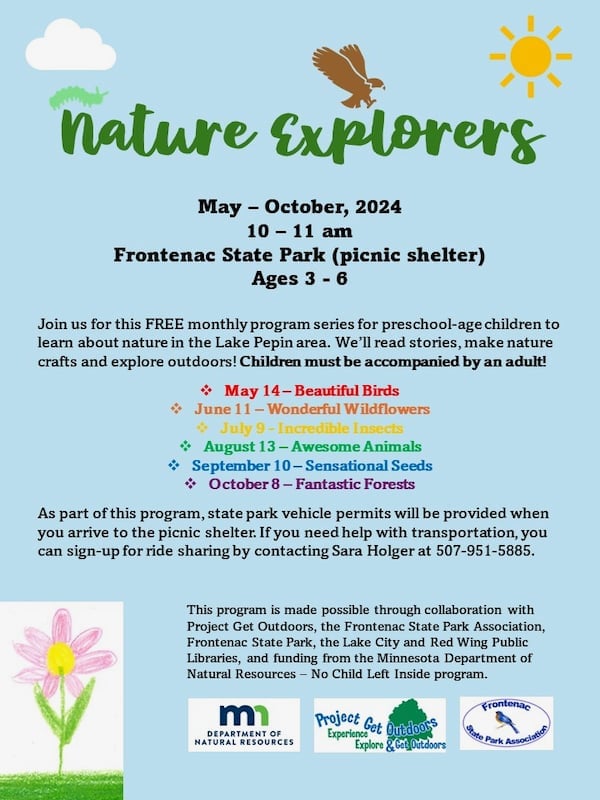
Saturday, July 13, 9-11 a.m.: Guided bird walk with FSPA members/Master Naturalists Janet Malotky and Steve Dietz, leaving from campground kiosk.
Saturday, July 13, 10-11 a.m.: Nature walk with interpretive naturalist and FSPA member Bruce Ause, leaving from campground kiosk.
Saturday, July 20, 10-11 a.m.: Nature walk with interpretive naturalist and FSPA member Bruce Ause, leaving from campground kiosk.
Saturday, July 27, 9-11 a.m.: Guided bird walk with FSPA members/Master Naturalists Janet Malotky and Steve Dietz, Sand Point Trail. Meet at the Sand Point Trail parking lot.
Saturday, July 27, 1-2 p.m.: Learn why freshwater mussels are key to healthy streams and lakes in Minnesota, and what the state Department of Natural Resources is doing to restore freshwater mussel populations. A program offered by the park and the Lake City Mussel Lab. Meet at the picnic shelter.
Saturday, Aug. 3, 9-11 a.m.: Ranger Jake Gaster leads a talk-and-walk on native plants, leaving from campground kiosk.
Saturday, Aug. 3, 10-11 a.m.: Nature walk with interpretive naturalist Bruce Ause, leaving from campground kiosk.
Saturday, Aug. 10, 9-11 a.m.: Guided bird walk with FSPA members Janet Malotky and Steve Dietz, leaving from campground kiosk.
Saturday, Aug. 10, 10-11 a.m.: Nature walk with interpretive naturalist Bruce Ause, leaving from campground kiosk.
Saturday, Aug.10, 11:30 a.m.-12:30 p.m.: Explore Frontenac State Park with local pollinator conservation coordinator, Christina Locke (MN Department of Natural Resources). Participants will learn about vital insect pollinators, their host plants and how these species play a role in building and maintaining healthy watersheds. In collaboration with Lake Pepin Legacy Alliance
Tuesday, Aug. 13, 10-11 a.m.: Nature Explorers: Wildlife, for preschoolers, with interpretive naturalist Sara Holger, main picnic shelter.
Thursday, Aug. 15, 3-4:30 p.m.: FSPA quarterly meeting, main picnic shelter.
Saturday, Aug. 17, 10-11 a.m.: Nature walk with interpretive naturalist Bruce Ause, leaving from campground kiosk.
Saturday, Aug. 24, 9-11 a.m.: Guided bird walk with FSPA members Janet Malotky and Steve Dietz along Prairie Loop Trail, leaves from park headquarters.
Saturday, Aug. 24, 10-11 a.m.: Nature walk with interpretive naturalist Bruce Ause, leaving from campground kiosk.
Saturday, Aug. 31, 10-11 a.m.: Nature walk with interpretive naturalist Bruce Ause, leaving from campground kiosk.
Saturday, Aug. 31, 7 p.m.: Starry, Starry Night program with the Rochester Astronomy Club, beginning with a 45-minute presentation at the picnic shelter before star viewing from the main parking lot.
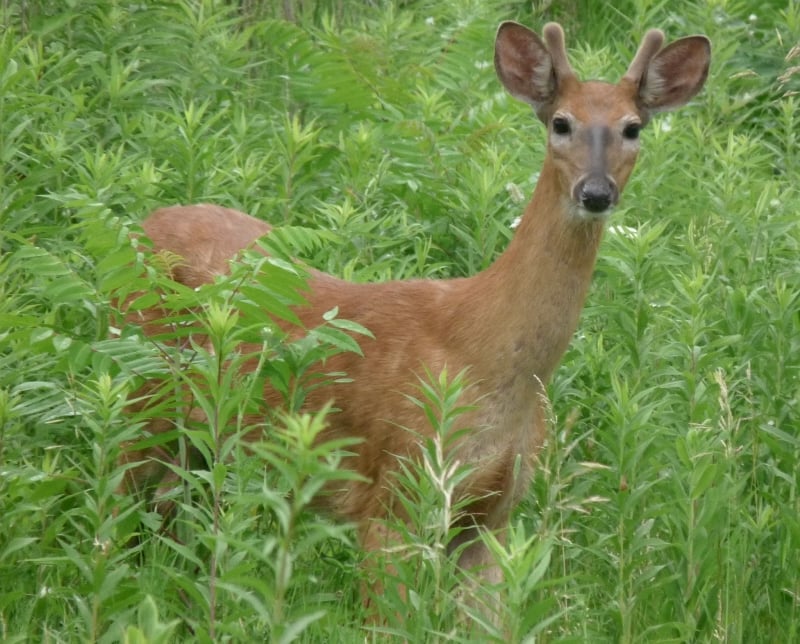
Dear readers: Do you know what this thing is??
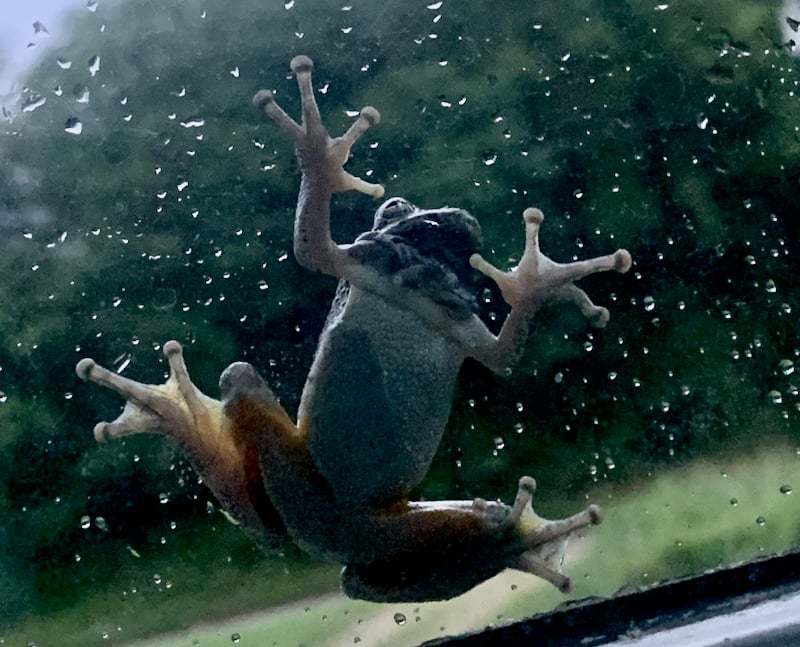
Wally Siewert, a bedrock Frontenac State Park Association member and retired park employee who lives across County Road 2 Blvd. from a stretch of the park, recently photographed this little fellow on one of his windows during a rainstorm. Do you know what this wee creature is? Send your knowledge and/or best guesses to us at pamelamarianmiller@gmail.com. We’ll include the right ones in our August newsletter! (For lots of fascinating information about frogs and toads in and around Frontenac State Park, see our August 2023 newsletter.)
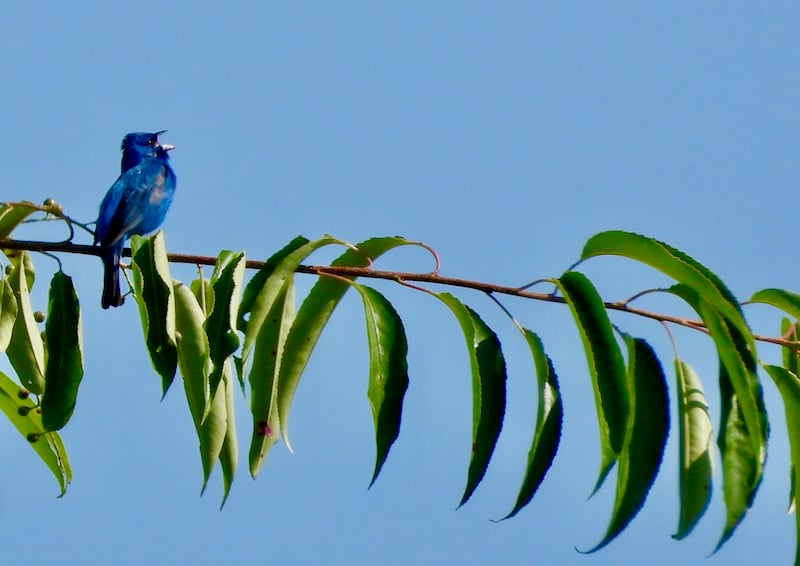
What a summer for fungi!
By Pamela Miller, Minnesota Master Naturalist volunteer
Nature offers us bumbling humans so many entry points–things about which we become curious, then fascinated, then wise. For many of you dear folks, it’s birds or wildflowers. For a few of us, it’s fungi.
Finding and learning about mushrooms is captivating, and that knowledge then becomes an alluring window into wider wisdom—what about trees? And soil? And human influences? And weather and climate? From one thing, we lurch to another, and learn yet more.
Here are a few fungi you can find in Frontenac State Park in July.
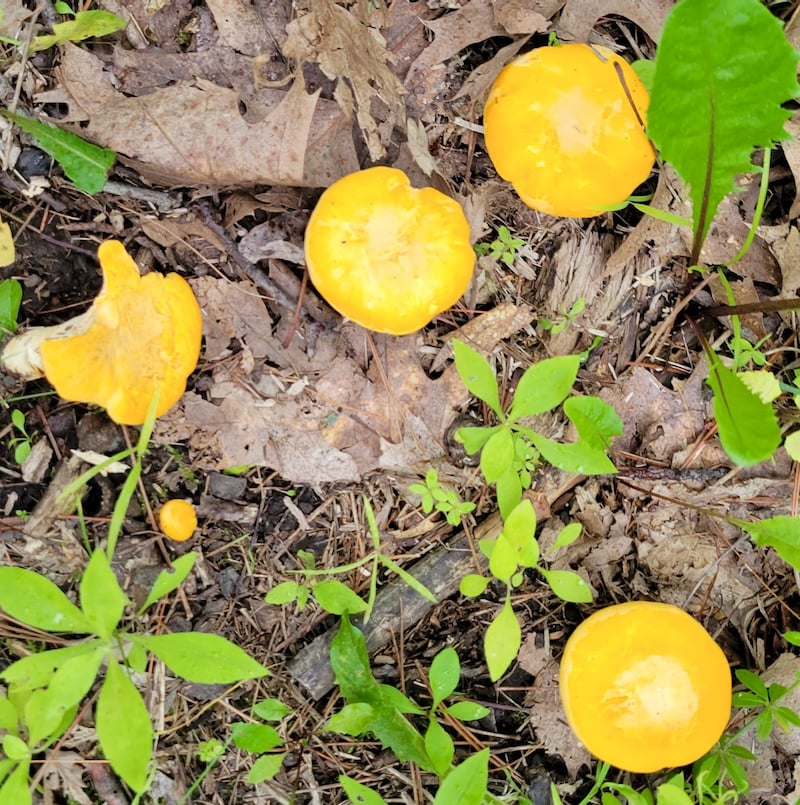
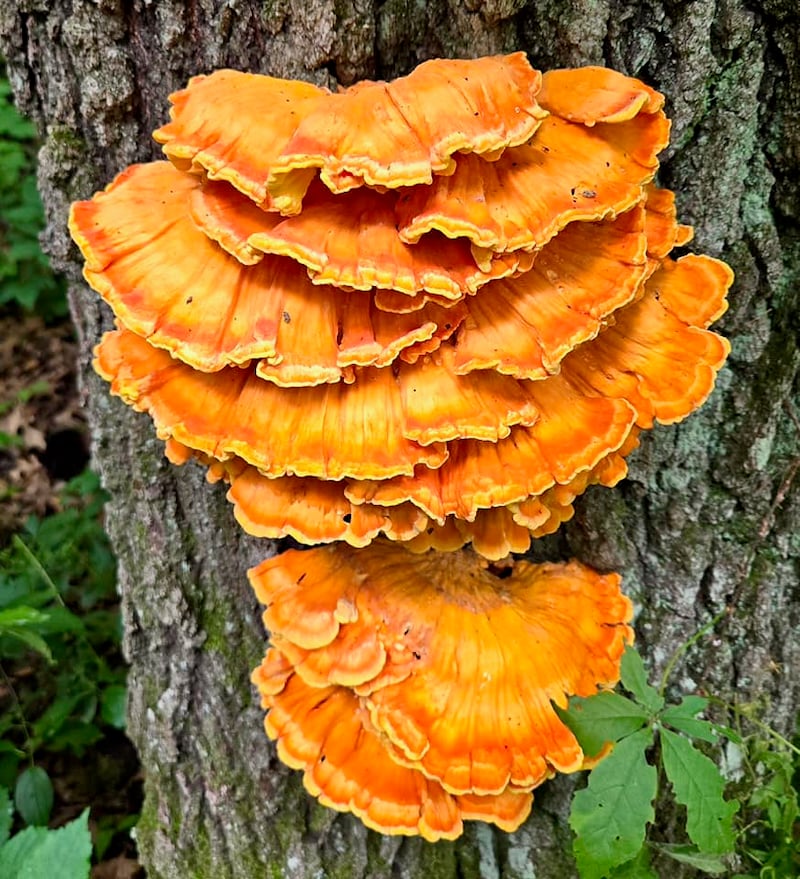
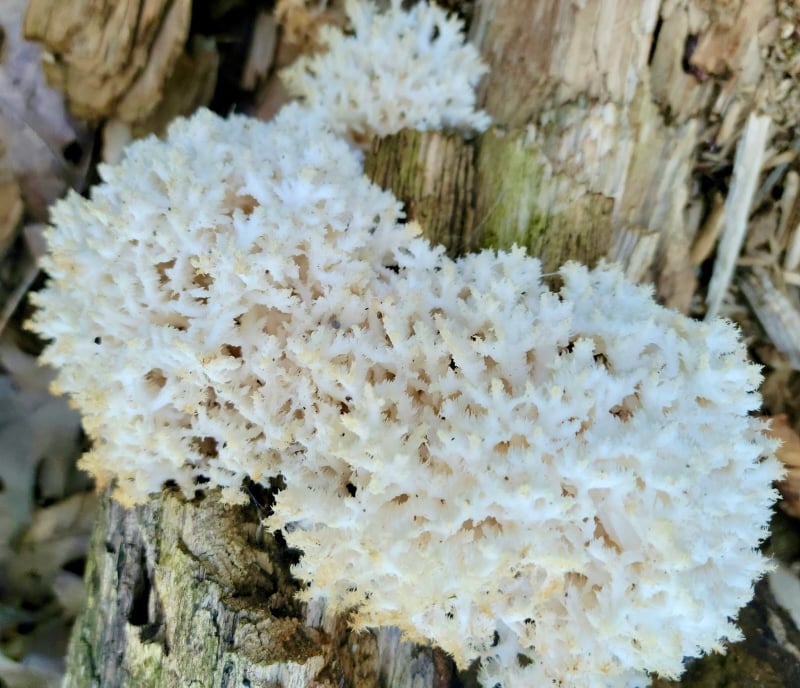
Bird note: I found a baby bird!
By Janet Malotky, Minnesota Master Naturalist volunteer
A couple of weeks ago, we got a call from The Raptor Center in Minneapolis, where we volunteer. Could we head out to Mazeppa, Minn., where a farmer had found a hawk-like baby bird alone on the ground? We headed there, where the concerned farmer led us to the base of a clump of trees.
There he had tucked a hatchling American Kestrel to protect it from his four boisterous dogs after finding it on the ground in his barn doorway. The bird, covered with white fuzz, looked up at us with its big, black, forlorn, baby eyes. Its anxious parents circled overhead, calling.
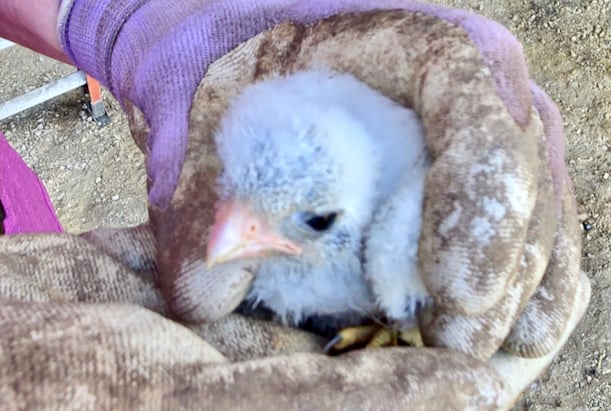
The Raptor Center doctors talked us through a basic physical exam, which revealed that the chick was not visibly injured. If it had been, our job would have been to keep it warm while getting it to TRC for care. As it was, we needed to find its nest if possible and get the chick back home. It was out of the nest way too early and would not survive on its own.
Fortunately, we did find the nest under the eaves of the barn - about 30’ high - near where the chick was found on the ground. We slipped it back in among its siblings and thanked the farmer for his kind concern and actions. He did all the right things in this situation: protected the baby from his dogs and other predators and called TRC for help.
As I was writing this Bird Note, TRC called again, this time with a report of a hawk on the ground, possibly for more than two days, and not very shy of people. When we arrived, we identified a juvenile Red-tailed Hawk. This full-size “baby” was sitting on a boat trailer and did not fly away when we approached to take a couple of pictures for the Raptor Center.
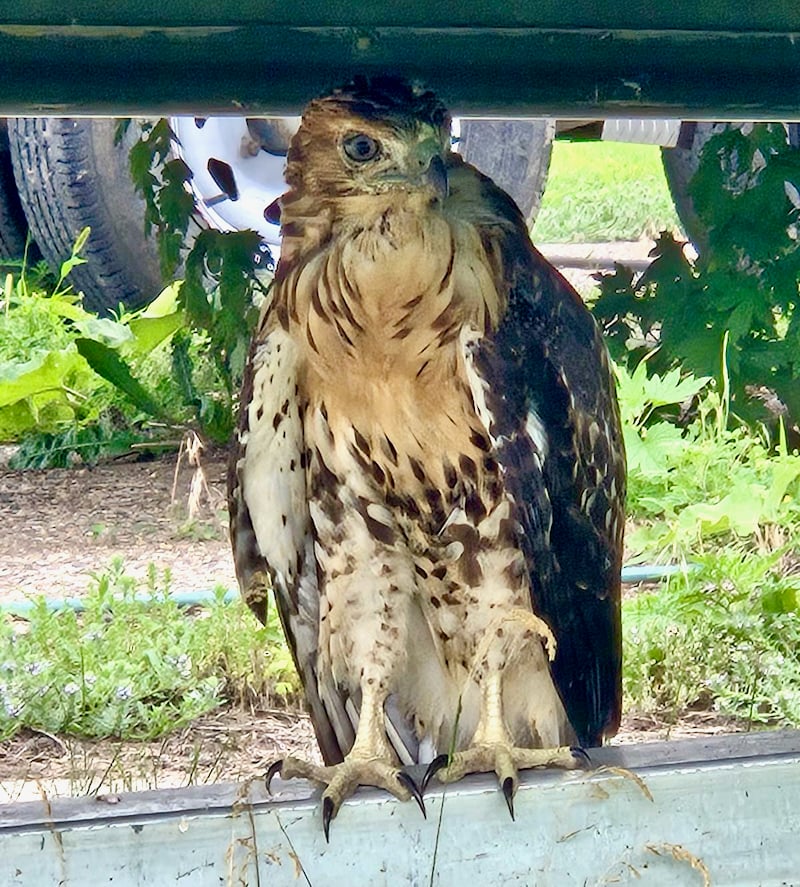
We watched the bird for a while to see if its body moved normally and rested symmetrically, which it did. We scanned the sky and trees for adult birds and though we didn’t find any parents, we did spot a large empty nest up the bluff not far away. From the pictures, TRC staff identified a full crop on the bird. A crop is a muscular pouch located on the front of a bird’s neck. It’s used to store food for later digestion. The full crop indicated that this youngster had recently been fed. TRC advised that this was likely a fledgling (a youngster that has recently left the nest on purpose), and was still being fed by its parents. They said it is not unusual for a Red-tailed Hawk to be on the ground for a couple weeks as it learns to fly and take care of itself.
It’s not always easy to tell what to do when you see a baby bird out of the nest. And at this time of year, fledglings are everywhere. Newly fledged birds, although already full-sized, can look a little helpless—generally flying poorly if at all, with a bit of fuzzy down still sticking out here and there, and hopping about while calling piteously to their parents. All of this is quite normal for fledglings. Their parents will continue to care for them outside of the nest until they are ready to fend for themselves. Thus, if the baby bird has most of its feathers, even if its actions are a bit bumbling and its cries are breaking your heart, it is best to leave its care to the parents, who are no doubt nearby, rustling up dinner.
If you find a baby bird that is naked and pink, however, or covered with fuzzy down, it’s best to return it to its nest. If that’s not possible, set the chick up in a safe spot where its parent can care for it until it’s old enough to fledge. It’s rarely successful, and actually illegal, to try to raise a wild bird in your home without a license.
Here’s a decision tree from Mass Audubon that can help guide your actions if you come across a solitary baby bird in the wild. Happy birding!
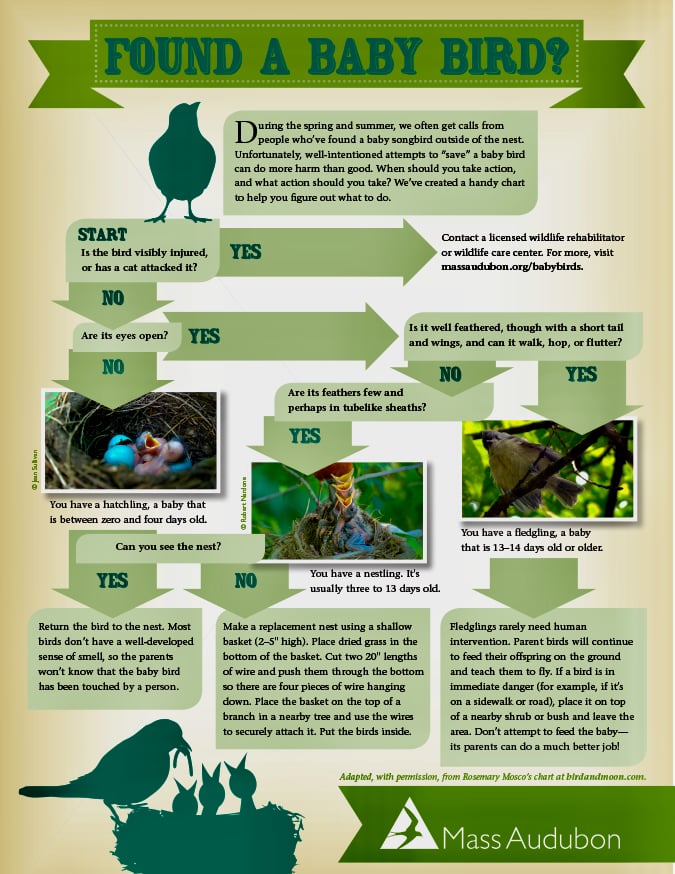
Notes from the field: American Kestrel
By Steve Dietz, Minnesota Master Naturalist volunteer
The American Kestrel (Falco sparverius), North America’s smallest—and cutest—falcon, is also its most numerous. But like almost all grassland species of birds, its numbers have drastically decreased over the past two decades. Kestrels are “obligate” secondary cavity nesters, meaning that they nest only in cavities made by another bird—woodpeckers, for example—or ones that naturally occur due to lightning, rot, broken limbs or other causes.
One way to mitigate their decline? Provide nest boxes.
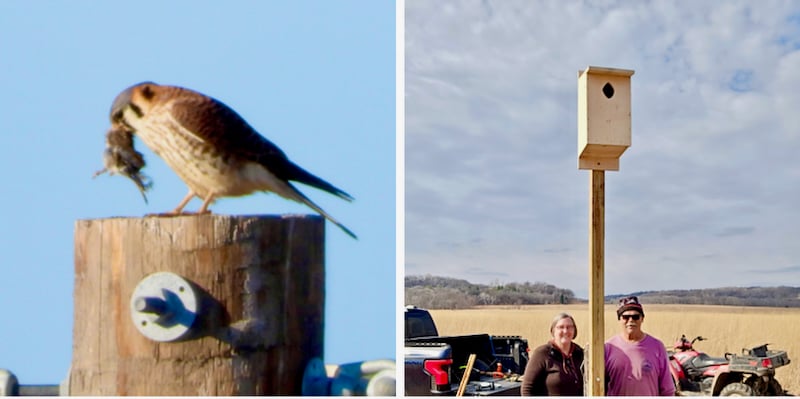

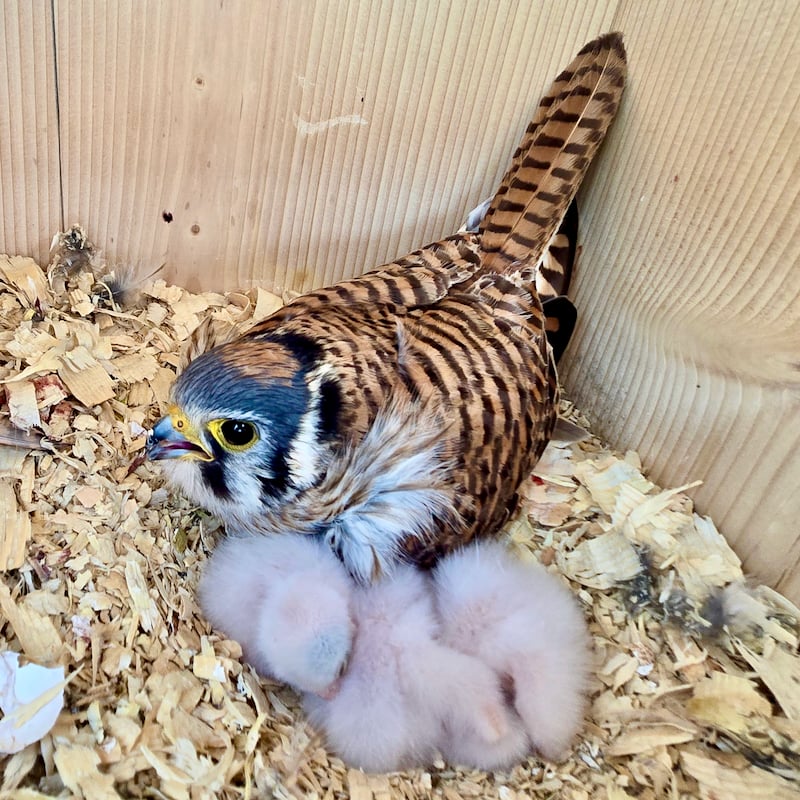
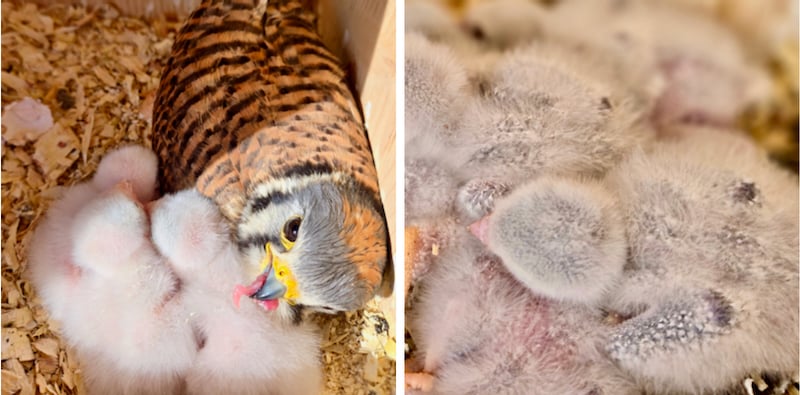
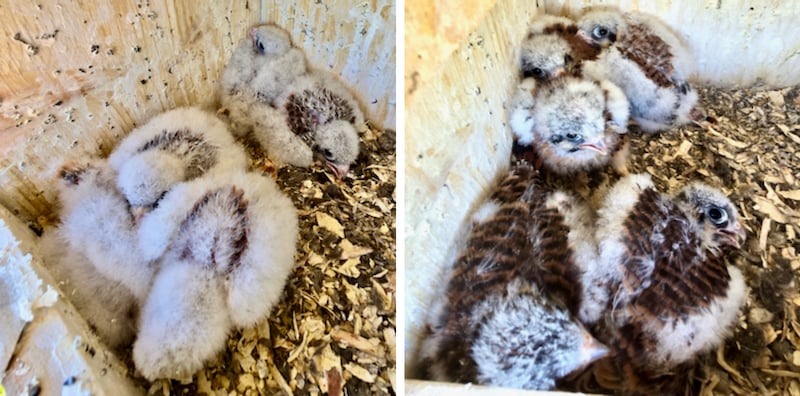
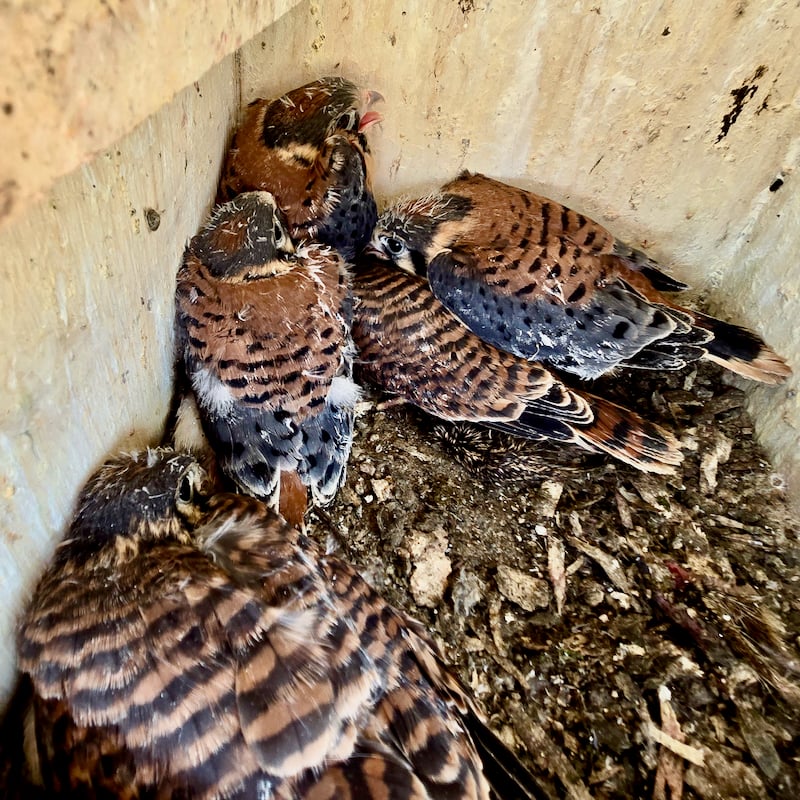
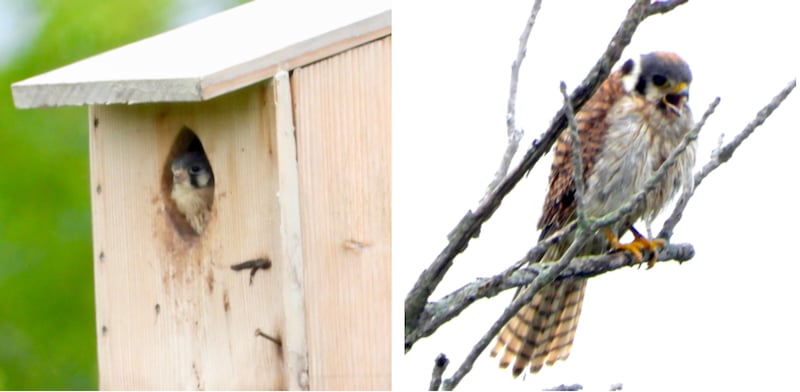
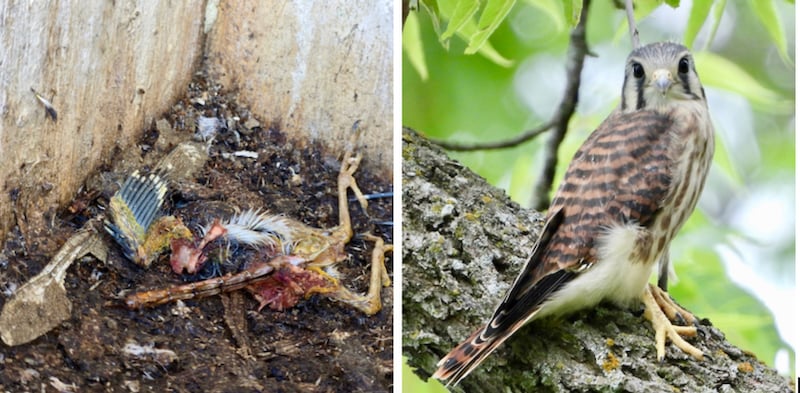
Factual information is taken from Cornell Lab of Ornithology's Birds of the World encyclopedia. All photos and any misinterpretations by Steve Dietz. Thanks to FSPA and FSP for supporting this work. Special thanks to Kirk Payne for advice and comments.
Poem of the month
“LIVING”
By Denise Levertov (American; 1923-1997)
The fire in leaf and grass
so green it seems
each summer the last summer.
The wind blowing, the leaves
shivering in the sun,
each day the last day.
A red salamander
so cold and so
easy to catch, dreamily
moves his delicate feet
and long tail. I hold
my hand open for him to go.
Each minute the last minute.
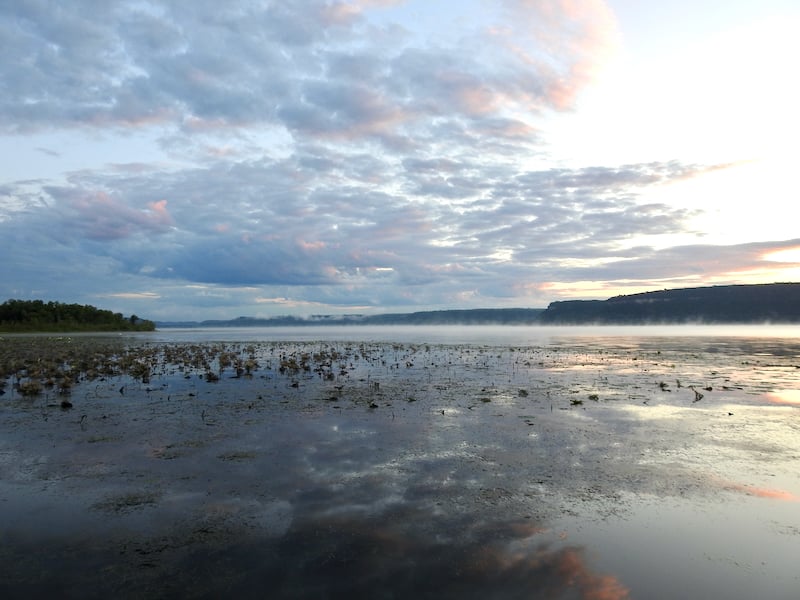
Interested in joining the FSPA?
We’d be honored to have your support. Dues are $25 per year for an individual, $35 for dual/family membership. Here’s a link with signup information.
A reminder that joining us occasionally to help the park out with volunteer efforts is awesome too, even if you’re not a member. The FSPA’s goal is simply to share our love of Frontenac State Park with as many people as possible.
To sign up to regularly receive this free and gloriously spam-free monthly newsletter, click on “Subscribe” below. Feel free to send questions or comments to your newsletter editor at pamelamarianmiller@gmail.com. Questions about the FSPA? You can reach our affable FSPA chair Steve Dietz at stevedietz@duck.com.
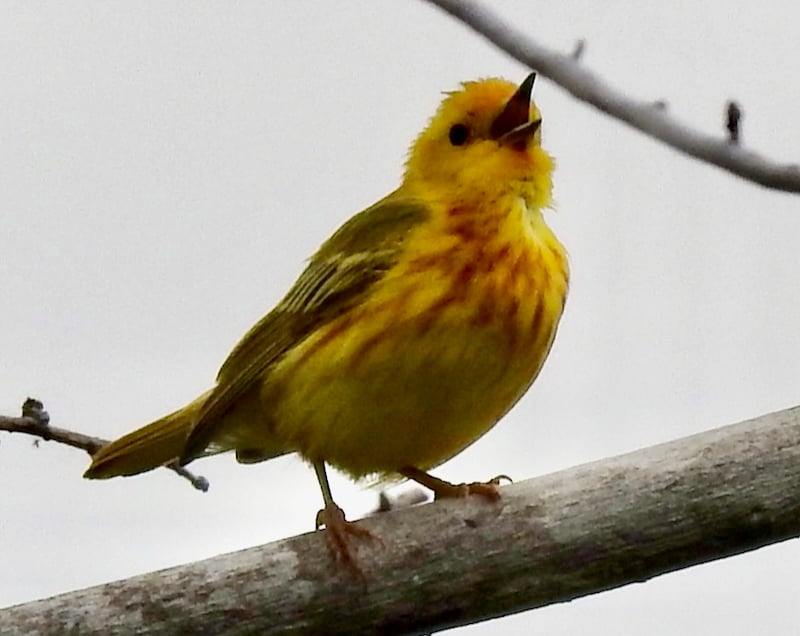
Handy links for more information and education
Frontenac State Park website
Frontenac State Park Association website
If you take pictures in the park, tag us on Instagram
Frontenac State Park bird checklist
Frontenac State Park on iNaturalist
Website for our township, Florence Township
Minnesota Master Naturalist program
Red Wing Environmental Learning Center
Lake City Environmental Learning Program on FB
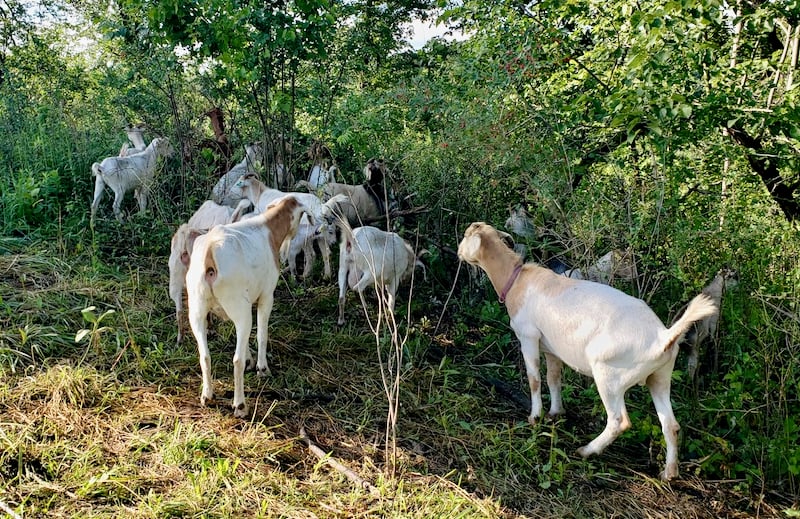
Frontenac State Park staff
Jake Gaster, park manager; Amy Jay, assistant park manager; Amy Poss, lead field worker
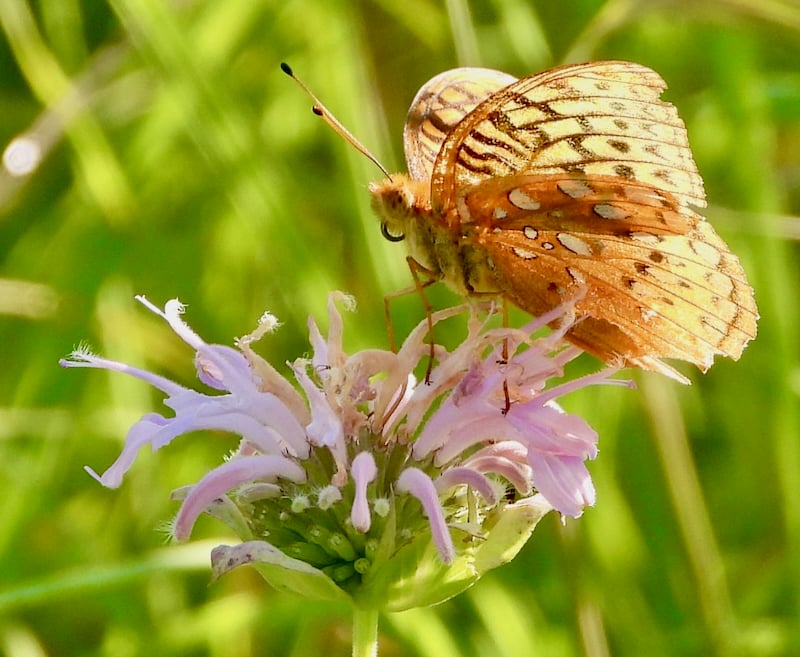
Parting shots
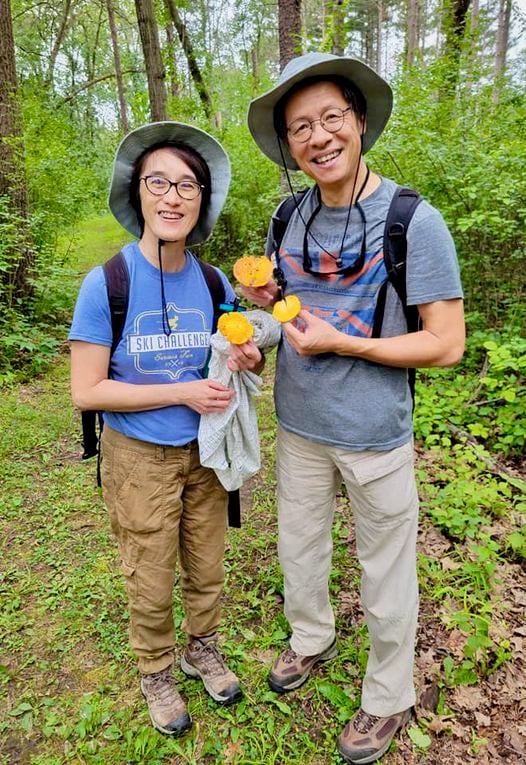
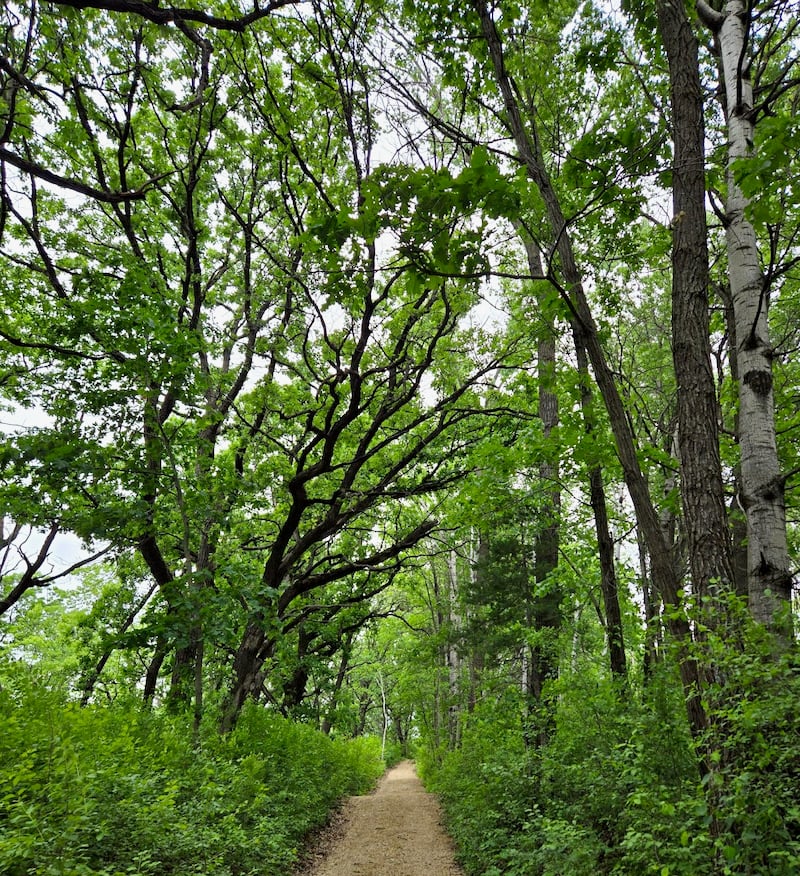
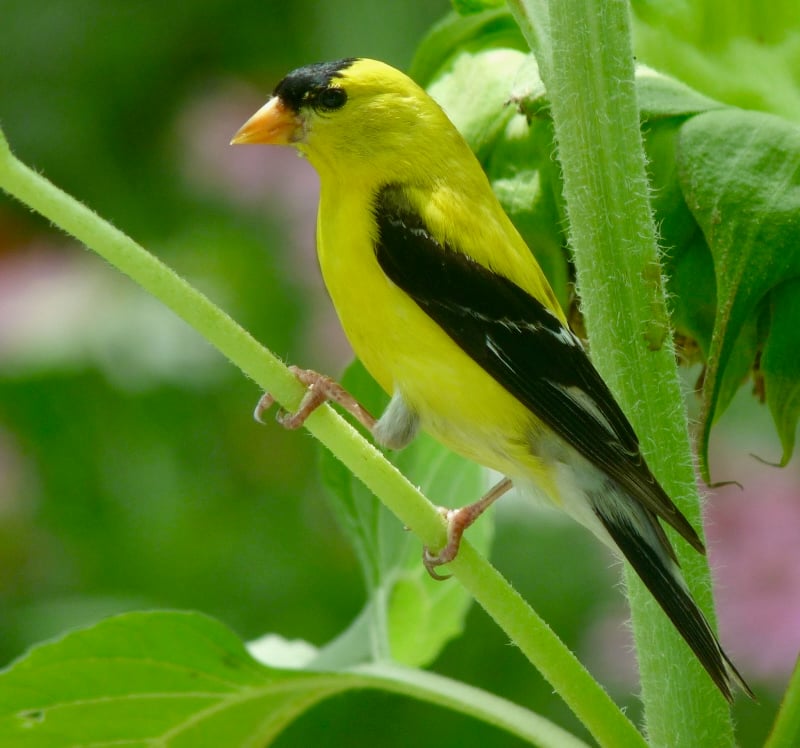
Thank you, readers and park visitors!
This is Volume 2, No. 7 of the Frontenac State Park Association newsletter, which was launched in April 2023.
Here’s where to browse the full archives of this newsletter.